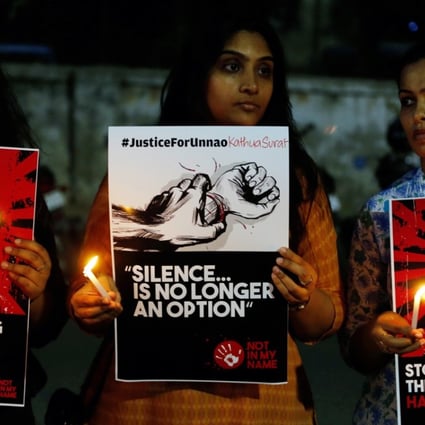Relevance: Challenges of Social Transformation: Violence against women.

Context:
In the case of rape, women in general and women from oppressed castes in particular face two types of injustice: active and passive. The article looks into the active and passive forms of injustice and discusses the role of the state.
Background:
The teenager belonging to an oppressed caste in Hathras, Uttar Pradesh, who was raped and subsequently died, had to face the worst form of injustice.
What is Active Injustice?
- Active injustice occurs when the accused responsible for rape gets support from various quarters of the society.
-
- A society that does not care for justice, does not find the action of some of its people who defend a rape accused, morally objectionable.
- When a rape accused gets support from the members of his own community, the vice of injustice becomes stronger.
- Injustice further acquires an intensified mode when investigative agencies of the state are accused of not doing their duties in a fair and just manner.
- In such a scenario, standing with the victim amounts to standing with justice.
- In the Hathras case, as per some media reports, some people from Savarna (higher) castes were defending the rape accused citing their innocence.
- Seeds of ambiguity were deliberately planted on social media platforms to cover the truth and weaken the demand for justice for the rape victim.
- Support for the accused also included the false acts of blaming the victim herself along with her parents for rape and even implicating her relatives in the whole matter. The only aim of such acts was to stop the victim from getting justice.
- The idea of active injustice in the Hathras case further strengthens from the fact that there was a delay in registering the first information report (FIR) and submitting samples to forensic agencies for medical examination.
What is Passive Injustice?
- When people choose to remain indifferent to rape or caste atrocities passive injustice occurs.
- While the indifference does support the accused, it contributes to the injustice to the rape victim. Such actions also embolden the accused to continue with their crimes.
- The act of passive injustice also occurs at various levels. Rhetorical statements of some political leaders such as “guilty would be punished,” “strong action has been already taken,” “the accused have been arrested and compensation has been promised,” and “justice would be done” also reflects the act of injustice. Such statements find a way to the larger public through social media and do much harm.
-
- Repeated use of rhetorical statements finally nullifies the quest for justice.
- Social media could also be misused to dismiss genuine protest including the Hathras one, as rhetorical.
- In such circumstances, the act of expressing solidarity with the victim acquires moral significance.
Responsibility of the State:
- In situations where rape threats tend to become frequent, the role of the state as a guarantor of justice becomes much important.
- To be on the side of justice, the state has to act in a fair manner, and not with prejudice. It is due to prejudice only that the state comes up with some “conspiracy theory” to defend its actions.
Conclusion:
- In the Hathras case, the fate of justice depends on the elimination of the possibility of injustice that is likely to overshadow the investigation.
- It is tragic that the act of fighting injustice only comes in after the victim is subjected to complete physical destruction and moral devastation.
- The act of resistance by the victim should be considered as a basis to rule out any conspiracy theory.
- When rape consciousness is reinforced by caste consciousness of the socially dominant, such overlap should be able to strengthen the investigation heading towards justice for the victim and her family

